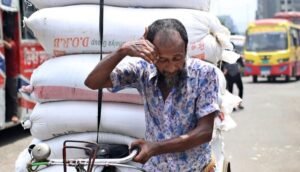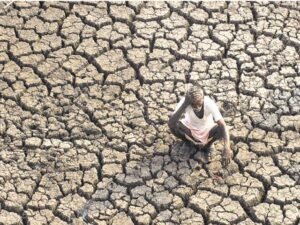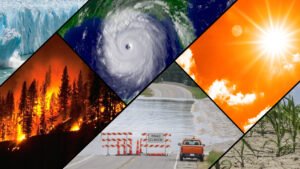🔥 Heatwave Nation: How India Is Bracing for a Scorching Summer
By Miss Samy | 19 June 2025
As global temperatures climb to alarming levels, India finds itself squarely in the eye of the storm — not metaphorically, but quite literally. With parts of northern and central India already recording temperatures above 48°C, the summer of 2025 is shaping up to be one of the most brutal in recent memory. From Delhi to Hyderabad, from farmers in Rajasthan to gig workers in Mumbai, the heatwave is more than a weather anomaly — it’s a public health emergency, a crisis of infrastructure, and a test of our resilience.
🌡️ The Alarming Rise in Temperatures

The Indian Meteorological Department (IMD) has already issued multiple red alerts in states like Rajasthan, Uttar Pradesh, Punjab, Haryana, and Delhi, with heatwaves predicted to persist well into July. Temperatures across northern India have been hovering between 44°C and 50°C, pushing the limits of what humans — and infrastructure — can tolerate.
In Phalodi, Rajasthan, thermometers hit 50.3°C, dangerously close to India’s all-time high of 51°C recorded in 2016.

But this year, it’s not just the north. Eastern states like Odisha and Jharkhand and central belts like Chhattisgarh and Madhya Pradesh are also witnessing abnormal spikes, showing that the crisis is expanding its footprint.
🏥 Heatstroke Cases and Public Health Crisis

According to the Ministry of Health and Family Welfare, over 3,500 heatstroke cases were reported in May alone, with dozens of deaths due to extreme dehydration, cardiac arrests, and complications among the elderly.
Hospitals in urban centers are overwhelmed. In Delhi’s LNJP Hospital, doctors have reported a surge in elderly patients with heat-induced delirium, while rural clinics in Bundelkhand are seeing children fainting during school hours.
Even animals and wildlife are suffering. Reports from Gujarat and Maharashtra confirm a spike in cattle deaths and declining milk yields, affecting rural livelihoods.
🚱 Water Woes Across the Nation

While the sun scorches above, a parallel crisis is unfolding underground — water scarcity. Many parts of Maharashtra, Karnataka, Telangana, and Tamil Nadu are reporting severe groundwater depletion.
In Latur and Anantapur, water tankers are the only source of drinking water for thousands. Urban centers like Bangalore are facing record-low water levels in lakes and reservoirs.
The Central Ground Water Board warns that over 250 districts in India are at high or critical risk of water stress this summer. And with monsoons delayed by 8–10 days, the relief seems far away.
🏙️ How Cities Are Coping

Urban India is facing a dual battle — rising temperatures and an infrastructure not designed for it. Concrete jungles trap heat in what experts call the urban heat island effect.
To combat this:
The Delhi government has activated 200+ heat shelters across the city for migrant workers and the homeless.
Ahmedabad, a city with one of India’s earliest Heat Action Plans (since 2013), is providing cool roofs, water stations, and awareness campaigns.
Hyderabad is piloting the use of heat-reflective paints on public buildings and bus shelters.
Despite these steps, most Indian cities lack heat preparedness plans or public alert systems, putting millions at risk.
🧑🌾 The Rural & Agricultural Impact

Farmers are among the worst-hit groups. Crops like wheat, pulses, and vegetables are withering under the scorching sun. In Vidarbha, many farmers have reported up to 40% yield loss.
Livestock and dairy production are also affected, with water shortages and high temperatures causing dehydration, heat exhaustion, and reduced fertility in animals.
Additionally, daily wage laborers, construction workers, and street vendors are forced to work under direct sunlight, risking their lives to earn a living. Most don’t have access to protective gear or regulated work hours.
🌍 Climate Change: The Bigger Picture

India’s rising heatwaves are part of a global pattern of intensifying extreme weather due to climate change. According to a 2024 UN IPCC Report, South Asia is among the regions most vulnerable to prolonged heatwaves.
The World Meteorological Organization (WMO) warns that global temperatures are on track to breach 1.5°C of warming by 2030, which would make Indian summers even more dangerous in the coming years.
Urbanization, deforestation, and reliance on fossil fuels are worsening the scenario. Cities need to integrate green cover, cooling corridors, and climate-resilient infrastructure to avoid a future where heat-related deaths become the norm.
🧊 What Can Be Done?
Immediate Measures:
Governments must enforce midday work bans during heatwaves, especially for outdoor workers.
Expand access to public cooling centers and drinking water booths.
Promote awareness campaigns on hydration, first-aid for heatstroke, and recognizing symptoms.
Long-Term Solutions:
Implement Heat Action Plans in every major city and district.
Invest in urban greening, sustainable water harvesting, and resilient architecture.
Encourage climate-responsive governance at both state and national levels.
🙏 A Collective Responsibility
As temperatures rise, so must our awareness and action. The heatwave of 2025 is not just a natural phenomenon — it’s a wake-up call. Citizens, city planners, policymakers, and the media must work together to ensure that future summers don’t come with a death toll.
India may be a heatwave nation today, but with coordinated efforts, it doesn’t have to remain one tomorrow.

